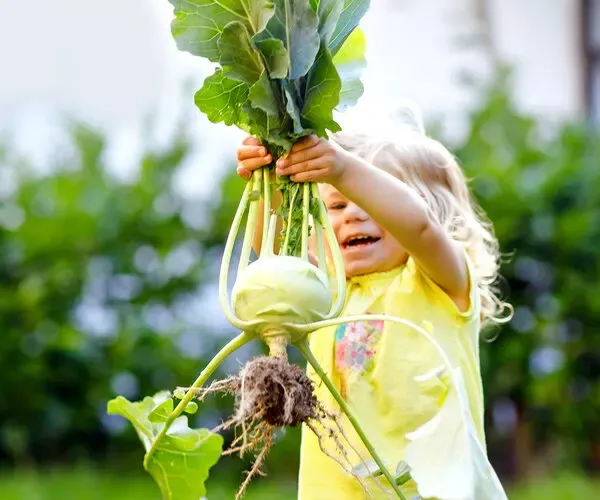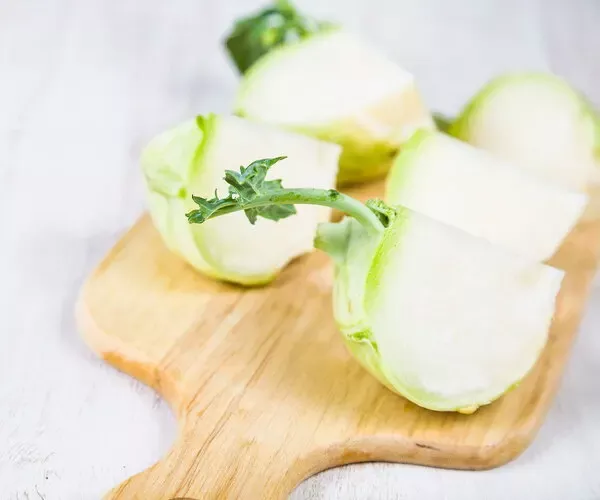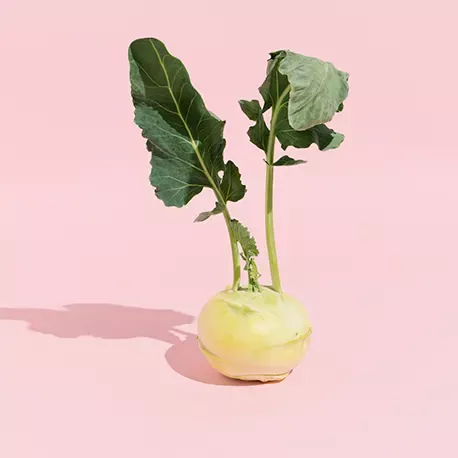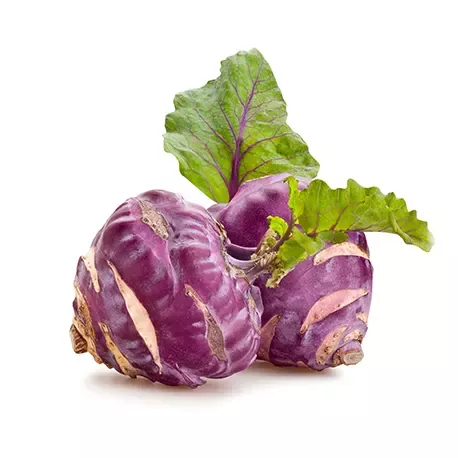Kohlrabi
Like cauliflower and broccoli, kohlrabi is a variety of brassica vegetables. Many people think that its root is edible. This is not true, as the most edible part of this plant is the very short, fleshy, thickened stem. In most varieties it is green, but as with cauliflower, purple varieties can also be found.

Kohlrabi appears on Polish plates in late spring and early summer. This popular vegetable has also gained its popularity through folk medicine. In the past, it was attributed therapeutic properties for coughs, asthma, tuberculosis or constipation. Nowadays kohlrabi is valued for its high nutritional value and distinctive flavour.
Kohlrabi is usually eaten raw as a separate snack, but it can also be used in salads, vegetable salads or grated and served with sour cream like turnips. It will also work well in vegetable soups or pickles.

SPECIES
Green varieties
Shades of green vary from intense light green to celadon. Young specimens, in particular, contain a lot of water and their flesh is tender and crunchy. As you pick your kohlrabi, make sure it is not overdried, yellowed or cracked. It is a good idea to keep some of the leaves, as it will stay fresh and firm longer in this condition.
Purple varieties
Similar in size and shape to the green ones. Its colour can be confusing, as the intense purple only appears on the top; the flesh is white or slightly greenish when cut. This colourful form is sure to be enjoyed by children.
NUTRITIONAL VALUE
Nutritional value per 100g of kohlrabi:
ENERGY VALUE
PROTEIN
FATS
CARBOHYDRATES
VITAMIN C
CALCIUM
PRODUCTION MAP
The region that is famous in Poland for the production of root vegetables is Małopolska, especially the vicinity of Kraków. Large crops of kohlrabi can be found there.




